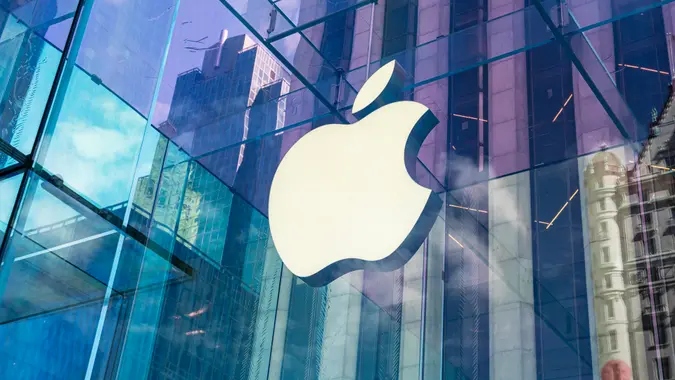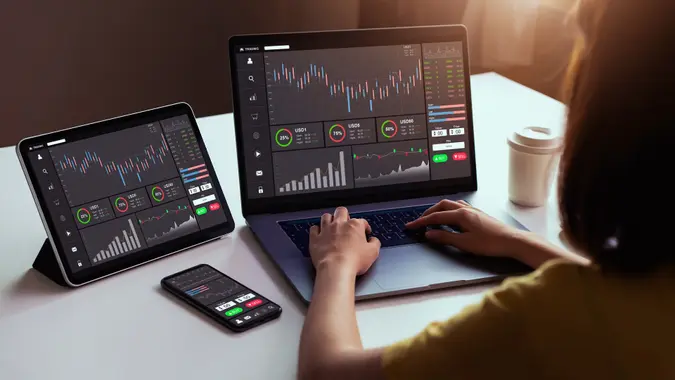What Is Market Cap?

Commitment to Our Readers
GOBankingRates' editorial team is committed to bringing you unbiased reviews and information. We use data-driven methodologies to evaluate financial products and services - our reviews and ratings are not influenced by advertisers. You can read more about our editorial guidelines and our products and services review methodology.

20 Years
Helping You Live Richer

Reviewed
by Experts

Trusted by
Millions of Readers
Market capitalization is the total value of a company’s shares on the stock market. Market cap is also known as the market value of equity, and it is a fairly straightforward mathematical calculation. However, market cap is just one way to measure a company’s worth. Here’s a look at the components of market capitalization, how to calculate it and how it differs from other types of evaluation you might use when choosing specific stocks to buy.
Market Cap Calculation
To calculate market cap, first get the number of a company’s outstanding shares. You can find this information from various news outlets, such as Reuters, or directly in a company’s financial reports. Next, multiply the number of outstanding shares by the current market price.
For example, if you were calculating the market cap of Apple, you’d take the number of outstanding shares — 17,929,157,000 fully diluted shares as of March 27, 2021 — and multiply that by the current market price, which was $127.10 as of the close of business on May 24, 2021. This places Apple’s market cap at $2,278,795,854,700, or over $2.25 trillion.
How To Use Market Cap
Market capitalization can be a helpful tool for investors because it divides companies into categories based on size. Large-cap stocks, which typically have market caps of $10 billion or more, are often dominant industry players with consistent revenue. This contrasts with small-cap companies, which have market caps between $300 million and $2 billion and are often younger, more aggressive companies that offer higher risk-reward profiles. Mid-cap stocks lie in between the two categories.
Market Capitalization vs. Other Valuation Measures
Market capitalization is a fleeting value that only provides the open market’s valuation of a company at a given moment in time. Market cap doesn’t take into account the intrinsic financials of an individual company. Some investors consider the true market value of a company to be its enterprise value or firm value. Enterprise value incorporates factors such as a company’s debt, cash and other assets to estimate the price a company could generate in the event of a sale.
Book value is another way to value a company. Book value consists of the total assets of a company minus its liabilities, thus representing what would be left for shareholders if a company had to sell all of its assets and pay off all of its debts. Book value is typically below a company’s market value because market value is a forward-looking projection of a company’s future earnings flow.
How Market Cap Can Be Artificially Affected
Market capitalization can be driven up or down based on factors that have little to do with the company itself, such as supply and demand. For example, if investors put money into index mutual funds, those funds are required to buy the stocks of the companies in that index, thus driving up their stock prices. At other times, general market panic may drive market caps down without reflecting any real change in the intrinsic value of the underlying companies.
This article has been updated with additional reporting since its original publication.
Our in-house research team and on-site financial experts work together to create content that’s accurate, impartial, and up to date. We fact-check every single statistic, quote and fact using trusted primary resources to make sure the information we provide is correct. You can learn more about GOBankingRates’ processes and standards in our editorial policy.
- Fidelity. "What Is Market Cap?"
- Yahoo Finance. "Apple Inc. (AAPL) Stock Price, News, Quote."
- Corporate Finance Institute. "Enterprise Value (EV) - Formula, Definition and Examples of EV."
- Corporate Finance Institute. "Book Value - Definition, Importance, and the Issue of Intangibles."
 Written by
Written by  Edited by
Edited by 
























